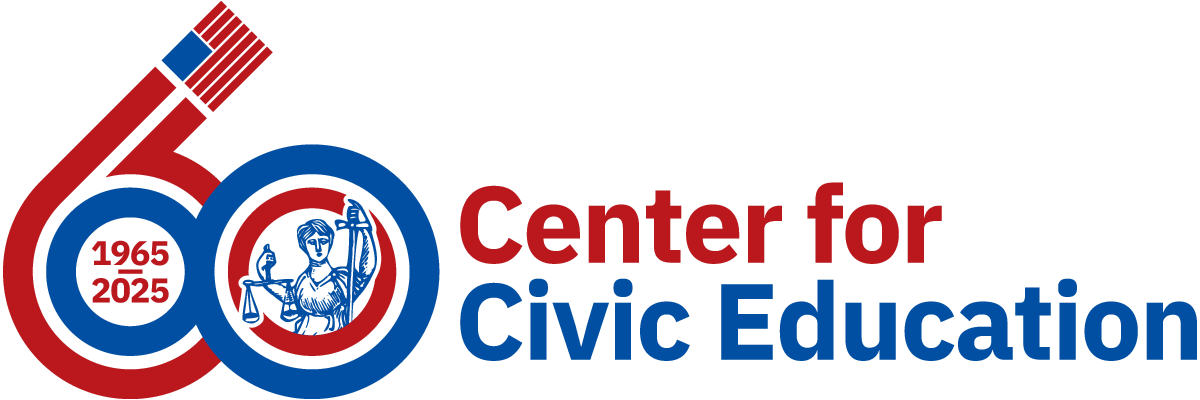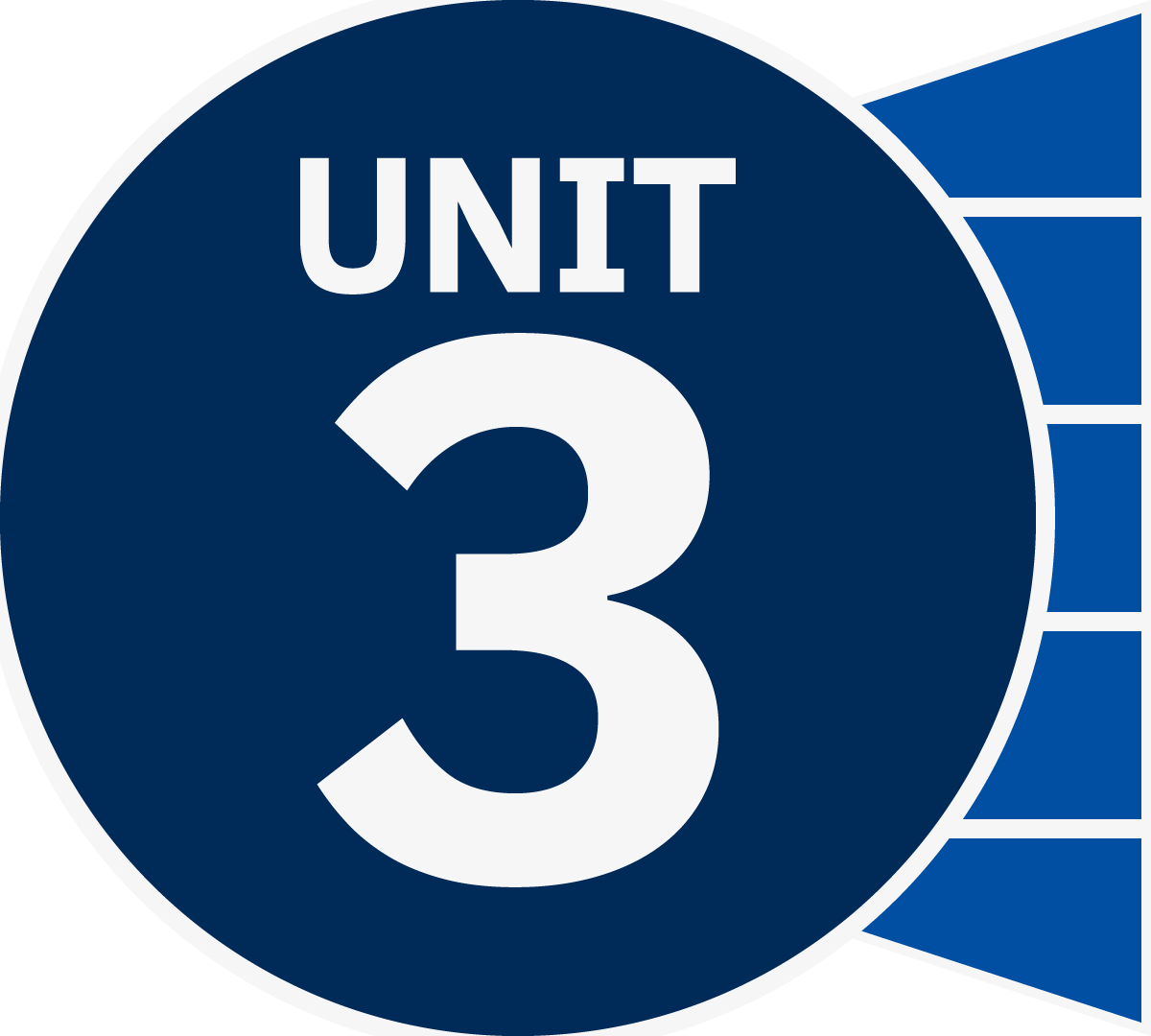Inquiry Companion: Unit 3
In Unit 3 of the We the People: The Citizen & the Constitution textbook, students discover the ways in which our Constitution is a living document that continues to evolve by examining the power of judicial review, the evolution of voting rights, and the impact of the Equal Protection Clause over the course of history.
How is the Inquiry Companion Structured?
Unit 3 challenges students to investigate the successes and failures of our democratic experiment. Our Inquiry Companion Guide activities for Unit 3 facilitate student participation in inquiry-based civics learning for each strategy.
Students engage by discussing a 1965 literacy test, and they explore the formation and function of political parties. They will explain the evolution of the Equal Protection Clause by participating in a civic conversation. Students then elaborate on voting rights and voter suppression through a democratic experience simulation. Finally, students will evaluate their understanding of the controversy surrounding judicial review.
Best practices for culturally responsive teaching weave through each activity.
Inquiry Guide Activity
Students deepen constitutional knowledge and civic dispositions by elaborating on new understandings through democratic experiences such as role plays, games, and conceptual simulations.
In this lesson, students will participate in a voting simulation, which includes a voter suppression exercise. Students will also examine a role-playing card and identify which constitutional amendment or congressional legislation applies to granting that person the right to vote. Students will then determine which detail would have caused their person to be denied the right to vote and analyze what caused the change.
Utilize this Elaborate strategy activity to enhance students’ understanding of the We the People: The Citizen & the Constitution textbook for Level 3, Unit 3, Lesson 20 or Level 2, Unit 5, Lesson 25.
We the People: The Citizen & the Constitution (Level 3)
- Unit 3, Lesson 20: How Has the Right to Vote Been Expanded Since the Adoption of the Constitution?
- Unit 5, Lesson 25: How Has the Right to Vote Expanded Since the Constitution was Adopted?
- Active learning
- Attentiveness to political matters
- Civic virtue
- Relationship skills
- Self-management
- Discuss voting rights and voter suppression.
- Identify the constitutional amendments and the congressional legislation that expanded suffrage in America.
- Analyze what events, actions, and movements caused legal changes in suffrage rights.
- Do we all hold the power to vote?
- disenfranchise To deprive of the right to vote.
- enfranchise Giving the right to vote to a person or category of persons.
- literacy test A test that requires people to prove that they are able to read and write. Until 1964, these tests were used in various states throughout the country to keep minorities from voting.
- poll tax A tax that voters in many states were required to pay in order to exercise their right to vote. These barriers were used until 1964 to prevent African Americans from voting.
- suffrage The right to vote.
- voter suppression A strategy used to influence the outcome of an election by discouraging or preventing specific groups of people from voting.
Note: This lesson contains material about racism, inequality, poverty, and injustice that some students might find offensive or potentially traumatizing. This material has been included in order to provide students with historical knowledge of access to the vote in America. A culturally responsive classroom will provide a welcoming and safe environment where students feel comfortable discussing difficult topics. Ensure students feel comfortable sharing appropriate personal perspectives. Consider establishing classroom norms that encourage discussion.
Initially, the Constitution left it to each state to decide who could vote. This largely led states to have different qualifications for voting but almost all restricted voting to white men who met certain property and residency requirements.
Several constitutional amendments and acts of Congress played a crucial role in expanding suffrage rights. The 15th Amendment, ratified in 1870, prohibited the denial of voting rights based on race or color, aimed at enfranchising African American men after the Civil War. The 19th Amendment, passed in 1920, granted women the right to vote. The Indian Citizenship Act of 1924 was legislation giving all “Indians born within the territorial limits of the United States” the right to vote. The 24th Amendment ratified in 1964 abolished poll taxes as a requirement for voting, removing a barrier that disproportionately affected African American voters in the South. The Voting Rights Act of 1965 was a landmark piece of legislation of the Civil Rights movement that aimed to eliminate discriminatory practices, such as literacy tests and other impediments aimed at preventing people of color from voting. Additionally, the 26th Amendment, ratified in 1971, lowered the voting age to 18, recognizing the right to vote for citizens who could be drafted into the military and fight in the Vietnam War.
These amendments and acts of Congress have collectively expanded suffrage rights, though in sequence that experienced many fits and starts. Movements in the U.S. still strive to ensure that the right to vote is universally accessible.
Additional resources for teacher background include:
- Voting Timeline
- Voting, Elections, and Representation, Part 9: The Fifteenth Amendment (Video)
- No Tax on Voting (Video)
- The Nineteenth Amendment: Women's Suffrage Movement, Part 1 (Video)
- Indian Citizenship Act of 1924: Native American Heritage Month, Part 6 (Video)
- Voting Rights Act of 1965 (Video)
- Votes for Young People (Video)
- Voting Rights in Colonial America: The Basic Ideas of Constitutional Government, Part 10 (Video)
Teachers should preview all student materials and resources prior to the lesson. Prior to lesson delivery, the teacher should print and cut out a token for each student for Part 1 as well as the U3 Elaborate Role-Playing Cards for Part 2.
Part 1
- As students enter the classroom, distribute one token to each student. If students ask, let them know tokens will be needed later in today’s activity.
- Welcome students to social studies.
- Introduce the inquiry question: “Do we all hold the power to vote?”
- Allow students time to make a prediction about the inquiry question and offer their own supporting questions.
- Pull the PTA Memo from your materials to read aloud to the class (do not begin the voting yet). The goal is for students to believe this is an actual request from your school’s parent-teacher association that you just received.
- Tell students that they will have an opportunity to vote and you will record the results.
- Read question one and allow students to vote by standing when their choice is called.
- Make a show of counting each student standing.
- Refer back to the memo and in surprise relate to the class that only those students holding token A can vote for question one.
- Ask students to show their tokens and only those with token A may remain standing and be counted on the recorder sheet.
- Continue this process with students standing and showing their token for each question as follows:
- Question 2 – only students with token B may vote
- Question 3 – only students with token C may vote
- Question 4 – only students with token D may vote
- Question 5 – only students with token E may vote
- Question 6 – only students with token A may vote
- Question 7 – only students with token B may vote
- Question 8 – only students with token C may vote
- Question 9 – only students with token D may vote
- Question 10 – only students with token E may vote
- After completing the voting simulation, summarize the results of the students’ votes for the end-of-year activities.
- Thank students for participating and explain that this was a democratic experience voting simulation.
- Facilitate a class discussion by asking the following questions:
- How do you feel about the outcome of the end-of-year activity?
- How did you feel when you were asked to sit down and told you could not vote on a particular topic?
- Did you find this simulation to be frustrating? Why or why not?
- Was this method of voting fair? Why or why not?
- How does this put some people at a disadvantage in voicing their choices?
- What would have been the most fair way to handle this vote?
- Can you identify times when someone’s right to vote has been suppressed?
- Remind students that throughout American history, various groups have been disenfranchised. Ask students to identify groups that have had the right to vote suppressed. Possible answers include African Americans, indigenous people, women, people under 21 years of age, people convicted of certain crimes, and people who did not own property.
Part 2
- Tell students we will now explore a number of groups of American citizens that have been disenfranchised at various points in American history by participating in another democratic experience simulation.
- Using your routine strategy for setting up groups, divide the class into seven groups of approximately four student members.
- Distribute one copy of the Role-Playing Cards to each group.
- Ask students to predict whether the individual on their card was ever disenfranchised and if so, why was their vote suppressed.
- Distribute Expansion of Voting Rights to each group. Providing the resource in digital format will allow students to watch the accompanying videos. Headphones are recommended.
- Instruct students to use the Expansion of Voting Rights handout to determine what legislative action granted the right to vote to the individual on their role-playing cards.
- Circulate around the room, encouraging each group, observing progress, and redirecting as needed.
- Groups that finish early can be given another role-playing card.
- Return to full class format, allowing volunteers to identify why their individual’s right to vote was suppressed and which legislative action granted the individual the right to vote. An answer key is provided.
Students will demonstrate mastery of the expansion of voting rights by completing the Exit Ticket to answer the inquiry question: “Do we all hold the power to vote?”
Students will also participate in self-reflection by completing the Democratic Experience Debrief.
Students could create an illustrated timeline of the expansion of voting rights since the adoption of the Constitution.
This theme of voter suppression could be extended with students exploring gerrymandering, the undercounting of undocumented individuals in census data, and the disenfranchisement of incarcerated individuals.













